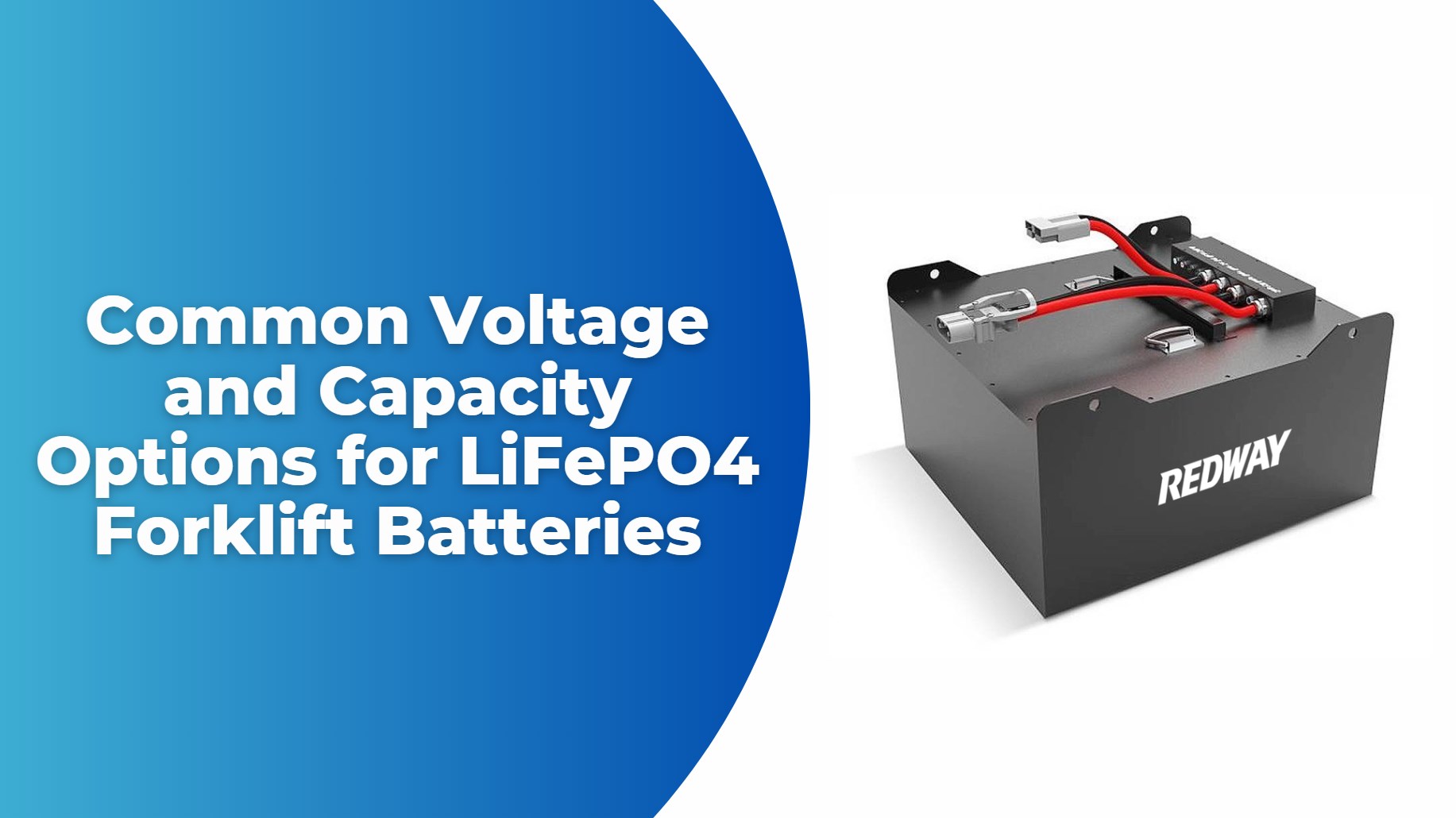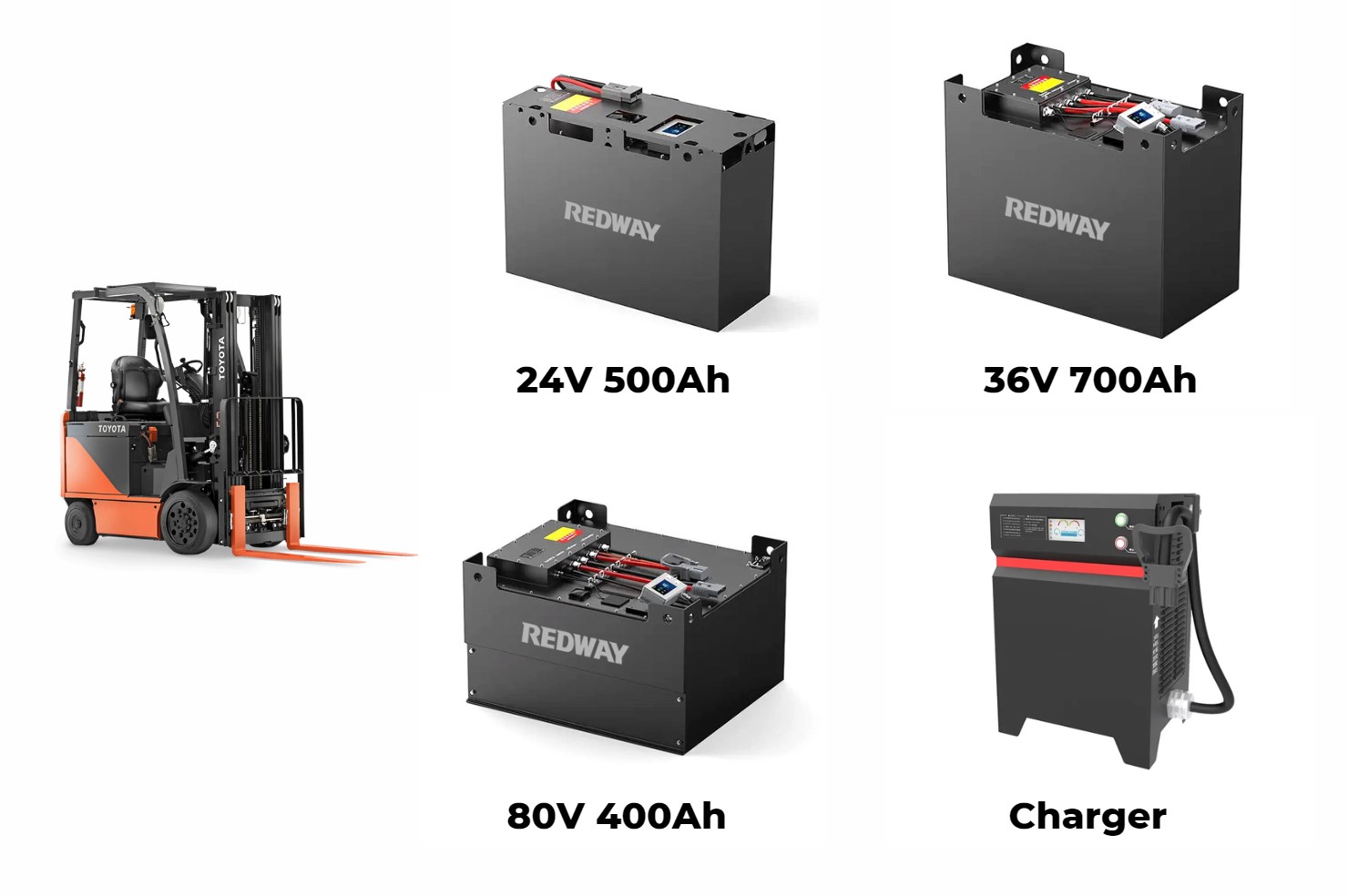LiFePO4 forklift batteries have become a preferred choice for various industrial applications due to their robust performance, safety, and longevity. Understanding the common voltage and capacity options available can help in selecting the most suitable battery for specific forklift requirements. This article provides a comprehensive overview of the typical configurations for LiFePO4 forklift batteries, enabling informed decisions for optimal performance and efficiency.
Common voltage options for LiFePO4 forklift batteries include 24V, 36V, 48V, and 80V. Capacities typically range from 100Ah to over 1000Ah depending on application requirements. Choosing the right combination ensures optimal performance tailored to specific operational needs.
1. Voltage Options for LiFePO4 Forklift Batteries
The voltage of a forklift battery is a crucial factor influencing the battery’s performance and compatibility with different types of lift equipment. Here are the common voltage options for LiFePO4 forklift batteries:
Wholesale lithium golf cart batteries with 10-year life? Check here.
24 Volts
- Usage: This voltage is commonly used in smaller electric lift equipment, such as walkie pallet jacks and center rider forklifts.
- Applications: Ideal for low-power, lighter-duty tasks where extended operational time is not a primary requirement.
- Benefits: Provides adequate power for small-scale operations while being cost-effective.
36 Volts
- Usage: Suitable for mid-sized electric lift trucks, including narrow aisle forklifts.
- Applications: Provides a balance between power and efficiency for moderate to heavy lifting tasks in warehouse settings.
- Benefits: Offers increased operational capacity compared to 24V systems, making it versatile for various applications.
48 Volts
- Usage: Widely used for larger lift machines, such as four-wheel counterbalanced forklifts.
- Applications: Designed for heavy-duty lifting and extended operational periods, suitable for industrial and logistics environments.
- Benefits: Delivers high power and efficiency, supporting more extensive and demanding applications.
80 Volts
- Usage: Typically employed in heavy-duty applications, including pneumatic counterbalanced forklifts.
- Applications: Ideal for the most demanding tasks requiring substantial power and endurance, such as in large-scale manufacturing and heavy industrial environments.
- Benefits: Provides superior performance and longer run times, making it suitable for high-load and high-intensity operations.
2. Capacity Options for LiFePO4 Forklift Batteries
The capacity of a forklift battery, measured in amp-hours (Ah), determines how long the battery can power the forklift before needing a recharge. The common capacity options for LiFePO4 forklift batteries are:
100 Ah to 200 Ah
- Usage: Often used in smaller forklifts and light-duty applications.
- Applications: Suitable for operations that require shorter run times or lighter loads, such as small warehouses or retail environments.
- Benefits: Offers a cost-effective solution with sufficient power for less demanding tasks.
300 Ah to 600 Ah
- Usage: Suitable for mid-sized forklifts that require more energy for extended operation.
- Applications: Ideal for medium-scale warehouse operations and manufacturing environments where moderate to heavy lifting is required.
- Benefits: Provides a balance between capacity and power, supporting longer operational times and more substantial workloads.
800 Ah and Above
- Usage: Typically found in larger, high-capacity forklifts used in heavy industrial applications.
- Applications: Designed for large-scale operations, including extensive manufacturing facilities and logistics hubs with high-frequency lifting tasks.
- Benefits: Ensures prolonged operational efficiency and is capable of handling the most demanding tasks without frequent recharging.
3. Choosing the Right Voltage and Capacity
Selecting the appropriate voltage and capacity for a LiFePO4 forklift battery depends on various factors, including the specific operational requirements of the forklift and the nature of the tasks it performs. Here are some considerations for making the right choice:
Want OEM lithium forklift batteries at wholesale prices? Check here.
Operational Requirements
- Type of Forklift: Match the battery voltage to the forklift type to ensure compatibility and optimal performance.
- Task Intensity: Higher capacities are necessary for forklifts engaged in heavy-duty or high-frequency operations to prevent premature battery depletion.
Work Environment
- Warehouse Size: Larger facilities may benefit from higher voltage and capacity batteries to support extended operational times and handle increased workloads.
- Temperature and Conditions: Ensure the chosen battery can operate efficiently within the environmental conditions of the facility.
Budget and Cost-Efficiency
- Initial Investment: Higher voltage and capacity batteries generally come with a higher initial cost. Evaluate the long-term benefits and operational cost savings to determine the best investment.
4. Summary
LiFePO4 forklift batteries are available in a range of voltages from 24V to 80V and capacities from 100Ah to over 800Ah. Understanding these common voltage and capacity options allows users to select the most suitable battery for their specific forklift and operational needs. By choosing the right battery configuration, businesses can enhance performance, efficiency, and overall operational reliability in their material handling processes.
Whether for small-scale or heavy-duty applications, LiFePO4 forklift batteries offer robust performance and durability, making them a valuable investment for various industrial settings.
FAQs
What Safety Measures Should Be Taken When Using LiFePO4 Forklift Batteries?
Do LiFePO4 Batteries Require Maintenance?
What is the Typical Cost of a LiFePO4 Forklift Battery?
Comparing Maintenance Costs: LiFePO4 Batteries vs. Lead-Acid Batteries
Exploring Real-World Applications of LiFePO4 Batteries in Forklifts
Industries Benefiting from LiFePO4 Forklift Batteries
What is LiFePO4 Technology?
The Evolving Market for Forklift Batteries
What Are the Latest Advancements in LiFePO4 Battery Technology?
How Does Fast Charging Impact Battery Life?
Types of Chargers for LiFePO4 Forklift Batteries
Common Voltage and Capacity Options for LiFePO4 Forklift Batteries
Comparing LiFePO4 and Lead-Acid Batteries: A Comprehensive Analysis







